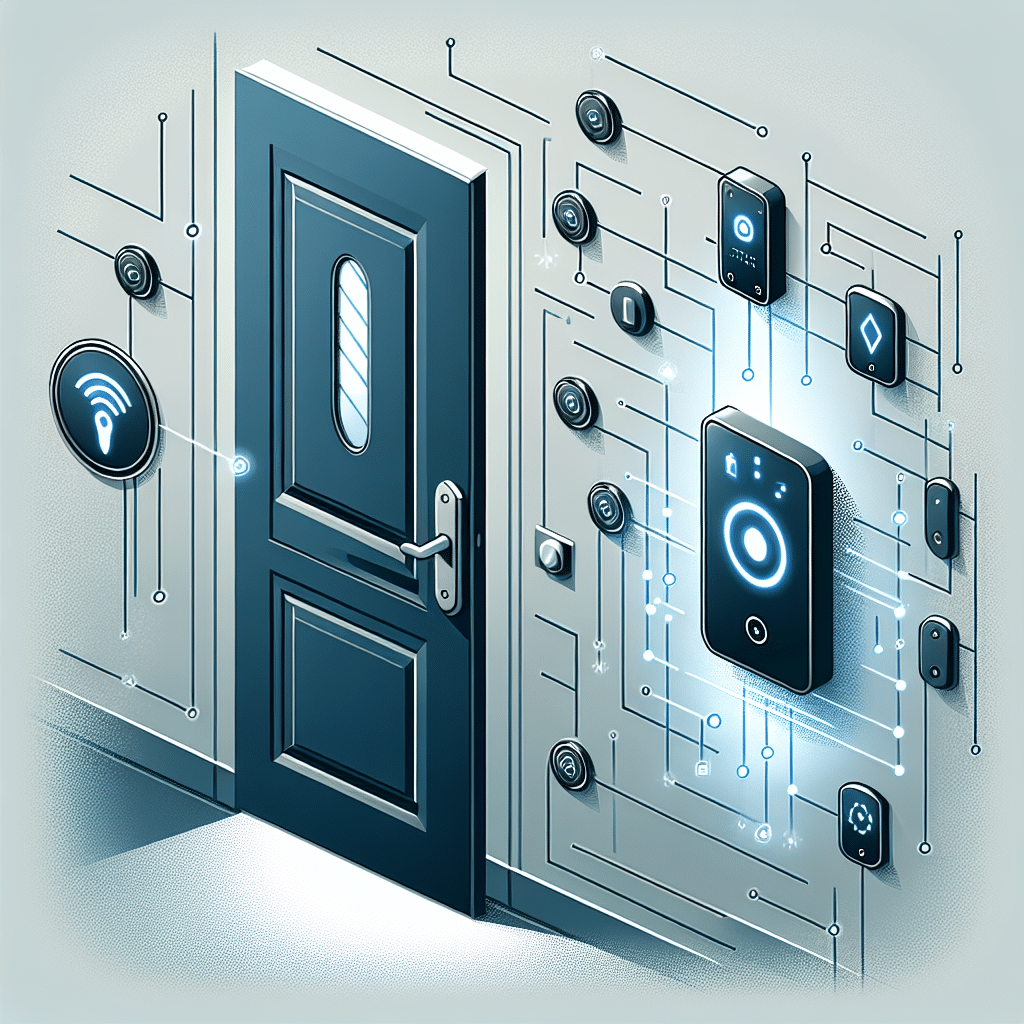Understanding Smart Sensors for Doors and Windows
What are Smart Sensors?
Smart sensors are advanced devices equipped with the ability to detect and collect data on various conditions, including movement, temperature, humidity, and more. They serve as critical components in the Internet of Things (IoT), allowing for enhanced automation, security, and energy efficiency in residential and commercial environments.
Types of Smart Sensors for Doors and Windows
-
Contact Sensors:
- These sensors consist of two parts—a magnet and a switch. When the door or window is closed, the magnet keeps the switch closed. When opened, the magnet moves away, triggering an alert. Primarily used for security, contact sensors notify homeowners about unauthorized access.
-
Motion Sensors:
- Using infrared or microwave technology, motion sensors detect movement within a specified area. Typically used in conjunction with camera systems, these sensors can capture unusual activity around doors and windows.
-
Glass Break Sensors:
- Specifically designed to listen for the sound frequency of breaking glass, these sensors provide another layer of security by notifying homeowners of potential intrusions.
-
Vibration Sensors:
- These sensors monitor vibrations from doors or windows being tampered with. When unusual vibrations are detected, they trigger an alert, thereby enhancing security against forced entry.
-
Temperature and Humidity Sensors:
- Used in smart homes for energy efficiency, these sensors can detect temperature and humidity changes around windows and doors. They can signal HVAC systems to adjust accordingly, thus saving energy.
-
Pressure Sensors:
- Incorporated into smart doormats or thresholds, these sensors can detect weight, alerting homeowners when someone is at the door, or ensuring that animals do not pass through.
Benefits of Smart Sensors for Doors and Windows
-
Enhanced Security: Smart sensors offer real-time alerts and notifications when there is any activity around doors or windows, allowing for quick responses to potential threats.
-
Remote Monitoring: Homeowners can receive updates on the status of their doors and windows through mobile applications, offering peace of mind even when they’re away from home.
-
Energy Efficiency: Sensors monitoring temperature and humidity help manage HVAC systems, leading to lower energy consumption and utility costs.
-
Integration with Smart Home Systems: Smart sensors can seamlessly integrate with other smart devices, like security cameras, alarms, and lights, creating a comprehensive smart home ecosystem.
-
User-Friendly Alerts: Many smart sensors send notifications via text, email, or app, ensuring users are instantly informed about events affecting their homes.
Installation and Compatibility
Most smart sensors for doors and windows are designed for simple DIY installation. Most models are wireless, requiring only basic tools for mounting. Before purchasing, ensure compatibility with existing smart home systems, such as Google Assistant, Amazon Alexa, or Apple HomeKit.
Choosing the Right Smart Sensors
-
Security Needs:
- Evaluate the security level required. If you live in a high-crime area, opt for comprehensive systems that include multiple types of sensors.
-
Integration with Existing Technology:
- Check for compatibility with existing home automation systems and consider whether the sensors can communicate with other devices.
-
Power Source:
- Sensors can be battery-operated or hard-wired. For less maintenance, consider wireless models, but assess battery life and replaceability.
-
Actionable Notifications:
- Look for systems that can notify you in real time, allowing you to respond promptly to alerts.
-
Weather Resistance:
- For outdoor applications, it’s essential to choose weather-resistant sensors to ensure longevity and functionality in varying conditions.
Popular Smart Sensor Brands
- Ring: Known for its video doorbells, Ring offers contact sensors that connect to a home security system.
- August: Offers a wide range of smart locks with integrated sensors, enhancing home entry security.
- Nest: Google’s Nest Protect smoke and CO detectors offer integrated safety features with their standard smart home products.
- Philips Hue: Primarily known for smart lighting, Philips Hue also provides motion sensors that can integrate with door and window systems.
- ADT: Known for comprehensive security services, ADT provides a range of smart sensors tailored for enhanced security in residential settings.
Future of Smart Sensors for Doors and Windows
As technology advances, smart sensors are expected to incorporate more AI-driven features, enhancing functionality. These sensors will likely become more adept at distinguishing between benign activities (like pets) and potential threats, reducing false alarms significantly. Moreover, developments in energy harvesting technologies could lead to sensors with longer lifespans and reduced maintenance needs.
Looking Beyond Security
While primarily associated with security, smart sensors for doors and windows also play a vital role in home automation and energy management. By integrating sensors with other smart home devices, homeowners can enjoy newfound conveniences. For example, when a window is opened, the thermostat can automatically adjust, or lights can turn on automatically when someone approaches the door.
Ethical Considerations and Privacy Issues
As with all smart technologies, privacy remains a key concern. Users need to be aware of data collection practices associated with smart sensors, such as whether audio or visual data is being transmitted. Selecting reputable brands with clear privacy policies helps mitigate these concerns.
Conclusion
Smart sensors for doors and windows represent a significant advancement in home security and automation, providing various benefits ranging from enhanced security to energy efficiency. As these technologies continue to evolve, they will offer increasingly sophisticated solutions for modern living, ensuring safety, convenience, and peace of mind for homeowners. By understanding the different types, functionalities, and considerations associated with these devices, consumers can make informed decisions to secure their homes effectively.
